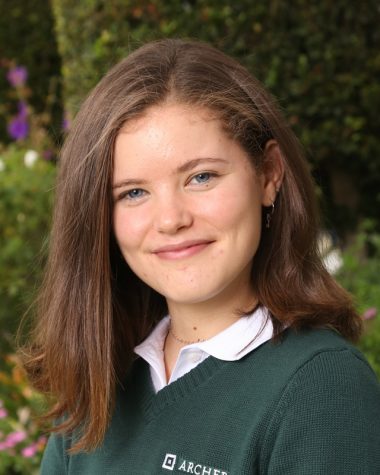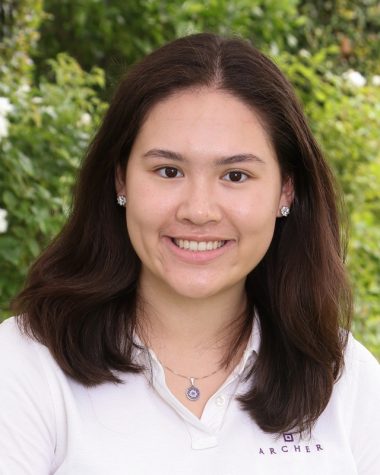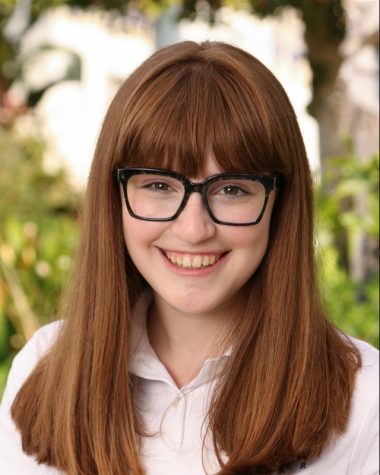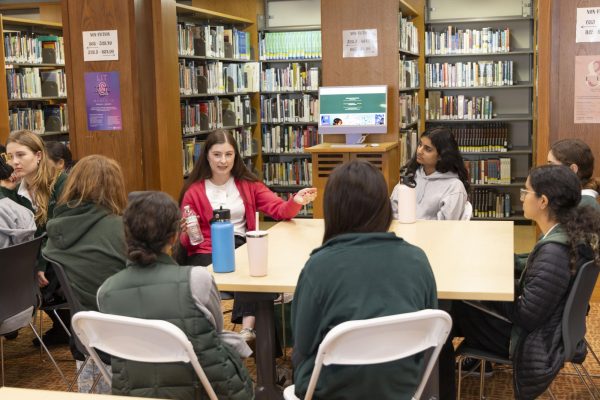AP Human Geography, AP Spanish classes visit Craft and Folk Art Museum
Photo credit: Cybele Zhang
Silkscreen painting by Rupert Garcia featured in the exhibit. This work was created in 1941 to convey the pain of deportation.
Although borders are typically used to separate, they brought together the AP Human Geography and AP Spanish classes. Students in the two classes went on a field trip on Oct. 26 to the Craft and Folk Art Museum to see “The US-Mexico Border: Place, Imagination, Possibility” exhibit.
According to the New York Times, the show includes various art pieces using the concept of the US-Mexico border and its culture as inspiration.
The exhibit is part of a project called Pacific Standard Time [PSD], a series that explores Latino issues and hopes to bring awareness through art. PST is currently collaborating with art institutes and museums across Los Angeles to present exhibits; this one specifically emphasizes the Mexico-US border.
AP Human Geography is currently learning about immigration, and AP Spanish is studying Latin American culture. This field trip is one of the ways Archer encourages interdisciplinary learning.

The exterior of the Craft and Folk Art Museum from Wilshire Boulevard. The museum has operated out of this historic building since 1975.
“All of the art was really inspirational, very thoughtful,” AP Human Geography student Lola Wolf ’19 said. “The Spanish class coming in offered a unique perspective.”
Beth Gold’s AP Human Geography class wrote a reflection about their favorite art piece and its connection to themes of immigration discussed in class.
“The topic of the US-Mexico border is a touchy one,” AP Spanish student Maya Wernick ‘18 said. “But everyone is impacted by it, and it was interesting to hear those stories.”
Juan Carlos Moraga Vidal’s Spanish class is creating their own art exploring certain aspects of their own identities inspired by the exhibit.
“I want my students to use this to be able to create something of their own,” Moraga Vidal said.
The Humanities department hopes to do more interdisciplinary field trips like this in the future, Moraga Vidal said.

Grace Dieveney became a member of the Oracle in 2017. She enjoys cooking, reading, writing, swimming, and volunteering at the Wallis Annenberg Pet Space....

Cybele Zhang joined the Oracle writing staff in 2015. She was promoted to Sports Editor as a sophomore and to Editor-in-Chief as a senior. Cybele graduated...

Maya Wernick joined the Oracle in 2016 and became Voices Editor in 2017. She is a member of Archer’s Student Council, Model United Nations Club and is...







![Faculty and students play in the Color Clash rematch March 20. Danilka Foranda-Zanipatin ('25) plays for the senior team. “Just to have some time deticated to just being supported by [a] large community… it’s just nice to have a little distraction.”](https://archeroracle.org/wp-content/uploads/2025/03/Screenshot-2025-03-20-at-4.12.21 PM-600x451.png)
